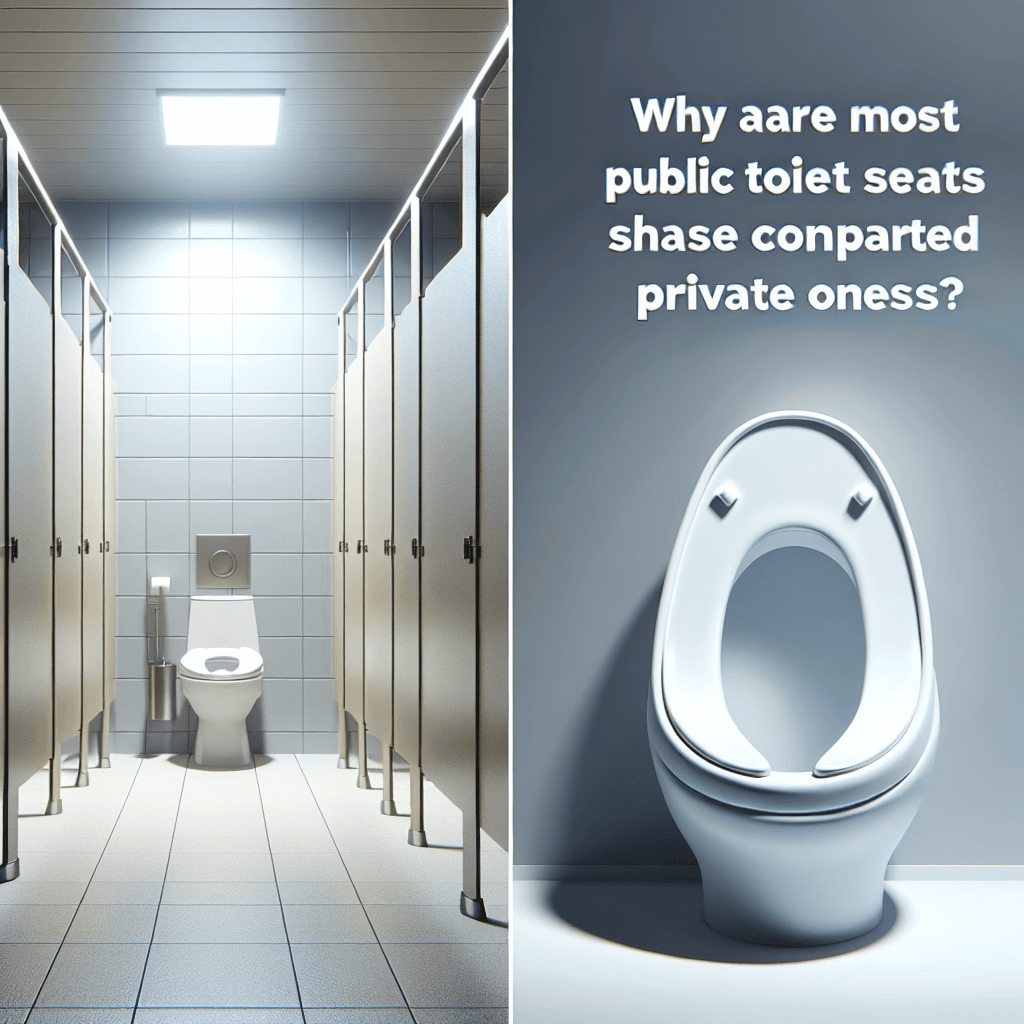Why do so many public restrooms have U-shaped toilet seats instead of fully round ones
Ever noticed that gap in public toilet seats? It's not just a weird design choice—it's actually required by plumbing codes for a fascinating reason you've probably never considered.


Too Long; Didn't Read
TLDR: U-shaped toilet seats are required by plumbing codes in public restrooms for hygiene, as they minimize contact and are easier to keep clean. They are also cheaper to manufacture and less likely to be stolen.
The Open-Front Mystery: Why Do So Many Public Restrooms Have U-shaped Toilet Seats?
It’s a subtle difference you’ve likely noticed countless times but perhaps never given a second thought. The toilet seat in a public restroom—be it at a restaurant, airport, or office building—almost always looks different from the one in your home. While residential toilets typically feature a closed, oval or round seat (an O-shape), their public counterparts sport a distinct gap in the front, creating a U-shape. This isn’t an arbitrary design trend or a simple matter of style. The open-front toilet seat is a deliberate and highly functional choice rooted in regulations, hygiene, and even economics. This post will uncover the practical reasons behind this ubiquitous feature of public life.
The Official Mandate: It's Often the Law
One of the most significant reasons for the prevalence of U-shaped seats is that, in many places, they are required by plumbing codes. In the United States, for instance, the International Association of Plumbing and Mechanical Officials (IAPMO) publishes the Uniform Plumbing Code, which serves as the foundation for plumbing regulations in numerous states and municipalities.
Section 409.2.2 of this code states that "water closets shall be equipped with seats of smooth, nonabsorbent material and shall be of the open front type." While this doesn't apply to private homes, it is the standard for any toilet intended for public use. The driving force behind this regulation is the primary concern in any shared space: public health and hygiene.
The Hygiene Hypothesis: A Cleaner, Safer Sit
The core benefit of the open-front design is improved sanitation. By removing the front portion of the seat, designers addressed several common hygiene challenges found in high-traffic restrooms.
- Minimizing Contact: The most direct benefit is that the U-shape reduces the surface area where a user’s body might touch the seat. Specifically, it creates a gap that prevents the user's genitals from making direct contact with a potentially germ-laden surface. This is a particularly thoughtful consideration for women.
- Preventing Splashes and Drips: The gap at the front of the seat helps prevent urine from splashing or dripping onto the seat itself. This simple design feature helps keep the seat cleaner for the next person and reduces the spread of bacteria.
- Providing More Room: For women, the open front provides more space to wipe after using the toilet without having to touch the seat with their hands, further enhancing the hygienic experience.
While a toilet seat is not the primary vehicle for disease transmission, these design elements collectively contribute to a cleaner environment and provide peace of mind for users.
The Economic Angle: Cost and Durability
Beyond hygiene and regulations, there are practical business reasons for choosing U-shaped seats. For businesses, government agencies, and other organizations that have to furnish dozens or even hundreds of restrooms, every small cost saving adds up.
First, U-shaped seats require slightly less material to produce than their fully-enclosed counterparts. While the savings on a single seat are minimal, they become significant when purchasing in bulk.
Second, this design is often more durable. A closed-front seat has a natural weak point at the very front of the ring. Over time and with heavy use, this is where cracks can form. The open-front design eliminates this stress point, making the seat more robust and less likely to break, reducing replacement costs over the long term. Some even speculate that the less-desirable U-shape makes the seats a less appealing target for theft or vandalism compared to a "nicer" residential-style seat.
Conclusion: A Design with a Purpose
The U-shaped toilet seat is a perfect example of a design that is so common we often overlook its purpose. Far from being a random aesthetic choice, it is a thoughtful solution to the unique challenges of public sanitation. Mandated by plumbing codes, engineered for better hygiene, and designed for economic efficiency, the open-front seat is a small but important feature that makes public restrooms safer and cleaner for everyone. So, the next time you encounter one, you'll know that its distinctive shape is not an accident, but a carefully considered feature working to protect public health and practicality.


